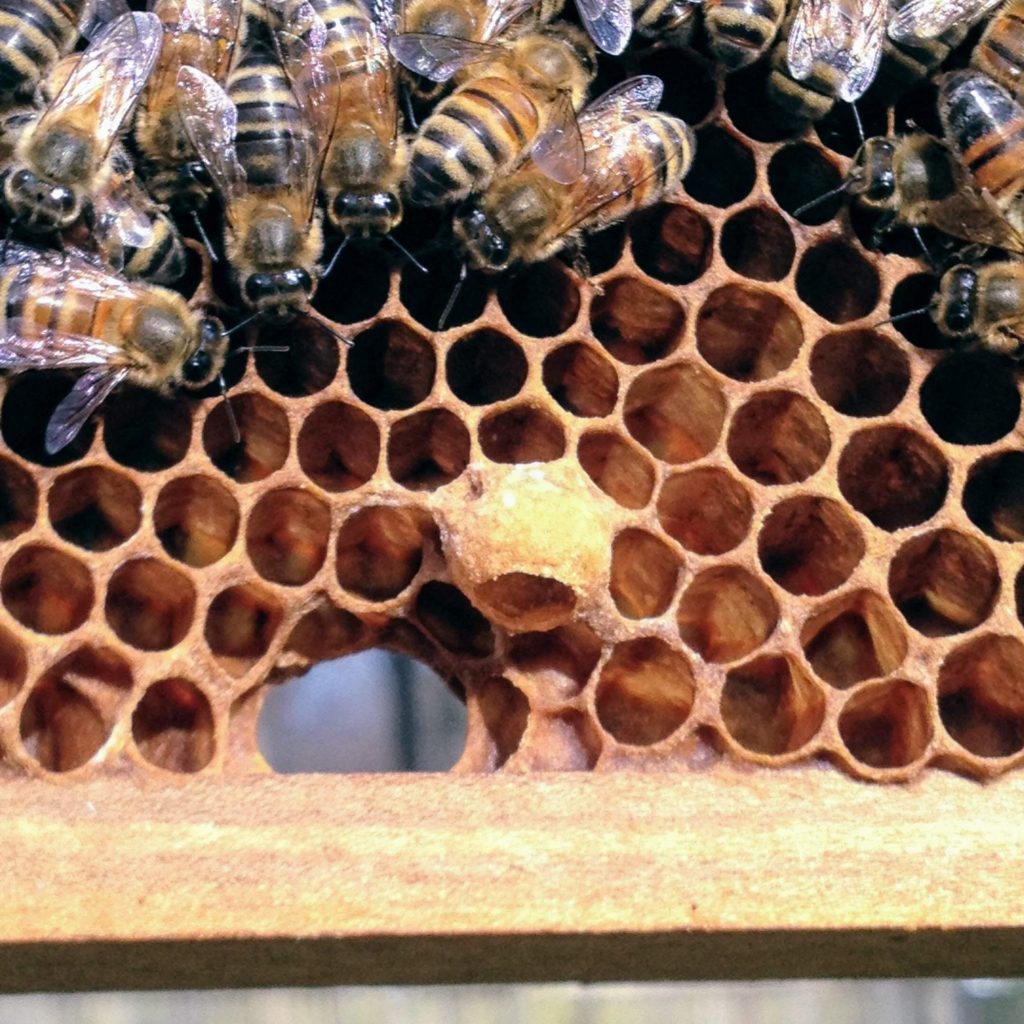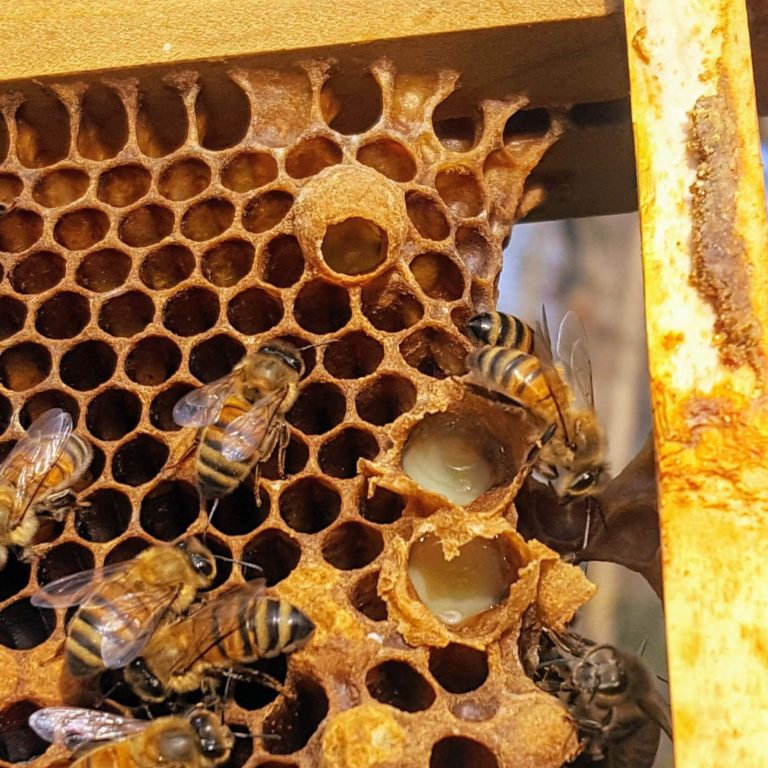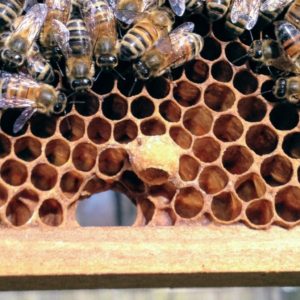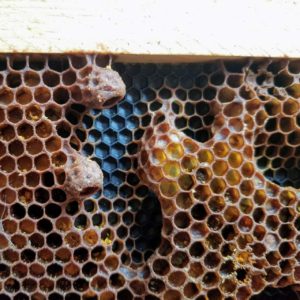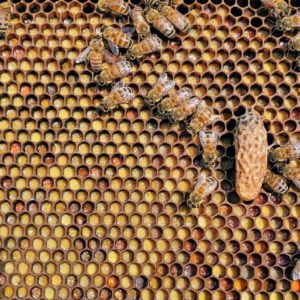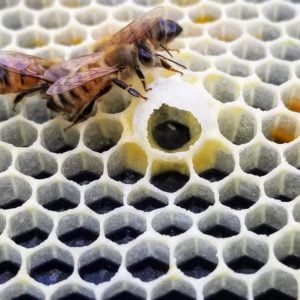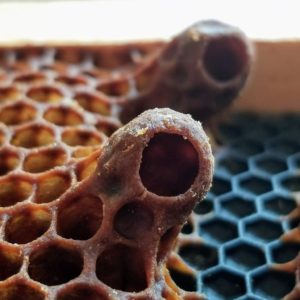So you have opened your hive up and you find all these things you don’t remember talking about in your beekeeping class. Right? That’s ok, you are not alone and we are happy to help.
Are they queen cells? Are they swarming? Do I still have a queen? What was wrong with my old queen? If these questions are running through your mind, that’s ok. You aren’t alone and you’ll have more questions as you explore your hives more.
Honeybees are constantly building inside their hives and queen cups are very common during the spring and the summer. It doesn’t mean they are making a queen, so that may be a good thing or bad thing depending on your situation.
Why Do Bees Make Queen Cells?
Honey bees are able to take care of themselves from day to day and also throughout the year. They are actually capable of maintaining their colony indefinitely, but that doesn’t always happen. It’s common for honeybees to make their own queen and they will do this for only 3 reasons.
- The colony has gone completely queenless
- The previous queen is injured or otherwise unable to do lay eggs at a high level and maintain who role
- The colony is wanting to divide into several different colonies and needs new queens for the new colonies
If you do find queen cups in your hive, do not worry. They are typically found throughout beehives during the spring and summer. For honeybees, a queen cup is merely insurance for when it is time to raise a new queen. Building a queen cup is the equivalent of pouring a concrete foundation for a home that you may or may not build later.
If bees do need a queen cup, bees can move a new egg into the queen cup and add fresh comb to the queen cup to turn it into a queen cell.
WHAT IS THE DIFFERENCE BETWEEN A QUEEN CELL AND QUEEN CUP?
Queen Cell
A queen cell is a queen cup that has been further developed and looks much longer. These look more like gonzos nose or a peanut and are much more obvious than a queen cup. Sometimes they can be hard to see because they will often be covered by the nurse bees who are taking care of the growing queen bee inside it.
Queen Cup
A queen cup is a small little cup that is often on the bottom of the frame built from the comb and directly on the comb. Their opening is always on the bottom of the cup. Their shape reminds me of one of those red Chinese lanterns with an open-top. Bees will often make many of them, just in case they need them. Just because you see queen cups does not mean that they are making a new queen.
When Do Bees Build Queen Cups?
Even though the bees will build 10-15+ in a single hive of these cups, they are rarely being used. From looking through many hives over the year, it is common to find many queen cells during the spring and summer. Queen cups and cells are both made from beeswax and bees are not able to make wax during the fall and winter, except for in sub-tropical and tropical areas.
Queen cups are built most often in the spring because this is the time of the year they are most likely in need of additional queens due to swarming. Queen cups are not built during the winter and it’s unlikely for bees to build them during the fall. Remember queen cups are made just in case they need one to raise a queen, so if it is swarm season, it’s also queen cup season.
Should I Remove The Queen Cups?
It is not necessary to remove the queen cups as they likely don’t have anything in them. Over the years, we have found that it is difficult to control a colony that wants to reproduce. After all, reproduction is what they are most concerned about at. If you do remove the queen cups, the colony will just make more if necessary. It doesn’t take many resources to create a queen cell and because the queen cell is not yet a queen cell, the bees have not invested much or any energy in raising a new queen.
If you have a queen cell instead of a queen cup, it might be a different story. Even when you find a queen cell, it is usually best to leave it alone and let nature take its natural path. There are of course exceptions to this, but generally, the bees are good at what they are doing. Read further down to learn more about what to do if you find queen cells.
What Do I Do If I Find Queen Cups?
If you do find a queen cups in your hive, there isn’t cause for alarm. When we see queen cups during the spring or summer, we simply tilt the frame up and look up into the cup. It takes a sharp eye to see an egg, but that is what we are looking for.
If you look inside the cup and don’t see anything, there isn’t anything you need to do. If you see an egg or larva in there, then this means the bees are making a new queen. That queen cup will develop into a queen cell and be much bigger within the week. It is 16 days from the day the egg is laid to the time the queen hatches out.
If you do see signs they are making a new queen, it could mean they are replacing the queen or the hive is preparing to swarm in the next two weeks. Smashing the queen cups/cells can be somewhat futile because they will make more.
Identifying Old Queen Cups Vs. New Queen Cups
Honeybees will only turn new queen cups into queen cells. It’s common to find queen cups from previous years inside your hive and they are easy to identify because they are hard and typically very dark. The edges of old queen cups will be rounded over, unlike new queen cups.
A new queen cup will be soft, fragile, and very nicely formed with crisp edges. Because they are so delicate, it is easy to damage them, but this is ok if you do damage them. Remember, they are made just in case and will make more if needed.
What Do I Do If I Find Queen Cells?
Queen cells are a bigger deal than queen cups and can’t be taken as casually as a queen cup. When bees make queen cells, it is a major event for the colony and marks a period of high risk for its success.
When a colony of bees is making a new queen, you should take a second and look for signs of the previous queen. If you find the previous queen and she looks good and is laying a lot of eggs, then it looks like they are a victim of their own success. When a colony is doing really well in the spring, they will likely multiple into several hives and your queen cells are likely for that reason.
Queen cells are incredidabley valuable as the entire frame they are on can be moved to a seperate bee hive and used to start a new colony. If you find multiple queen cells, this is a great use for them.
Your old queen will leave with roughly half of the bees and build a new colony somewhere else. Your queen cell will hatch out and take over the responsibilities of the old queen in your current colony. A sign this is happening is seeing 10+ queen cells towards the bottom of the frame, spread across multiple frames.
If you only see one or two queen cells and you don’t see as much proof of the previous queen, they are likely just replacing the previous queen with a new one and not swarming.
This is a good thing as it shows the previous queen wasn’t capable of fulfilling her responsibilities and is being replaced. Just close up the hive and don’t open it up for 2-3 weeks while the bees sort it out.

